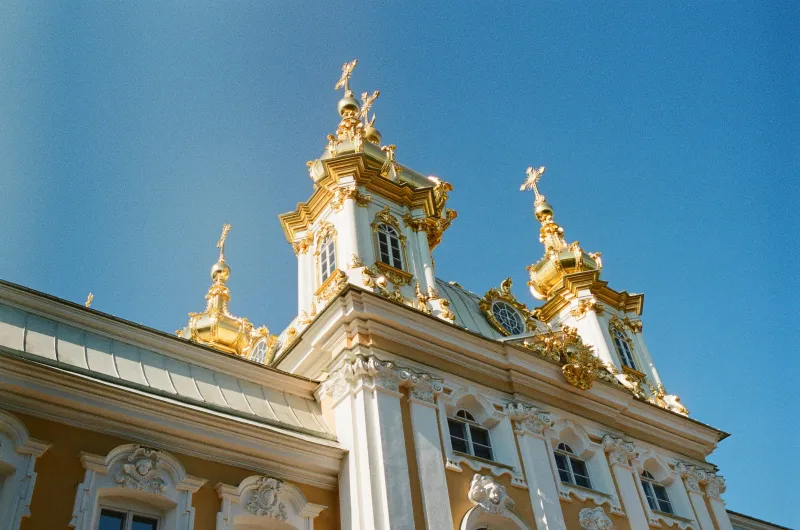Baroque style, with its magnificent, ornate, and emotionally rich beauty, has left a profound mark across Europe. In France, although somewhat more restrained compared to other countries, Baroque still contributed to the creation of splendid architectural works, reflecting the extravagance and power of the aristocracy. Let’s explore the most iconic Baroque masterpieces in France, where sophistication blends with classical beauty.
The Formation and Development of Baroque Style in France
Baroque style arrived in France in the 17th century, during the reign of King Louis XIII, but truly flourished under the “Sun King,” Louis XIV. Unlike Baroque in Italy or Spain, French Baroque is more classical, orderly, and harmonious. French architects skillfully combined Baroque elements such as curves, light contrasts, and lavish decoration with balanced and symmetrical compositions, creating a distinct style often referred to as Classical Baroque.

Distinctive Features of French Baroque Architecture
French Baroque architecture has its own characteristics, easily distinguishable from other Baroque variations worldwide:
- Balance and Harmony: In contrast to the freedom and exuberance of Italian Baroque, French Baroque architecture emphasizes balance and symmetry in the overall composition. Buildings often have rectangular or square plans, with clear axes of symmetry.
- Use of Classical Elements: French architects frequently used classical architectural elements such as Doric, Ionic, and Corinthian columns, arches, and moldings to decorate facades and interiors. However, these elements were transformed and stylized to suit the Baroque spirit.
- Lavish and Refined Decoration: Despite being more orderly, French Baroque architecture is still full of lavish and refined decoration. Reliefs, statues, ceiling paintings, and gilded furniture are widely used to express the luxury and power of the owners.
- Integration of Architecture and Landscape: A crucial feature of French Baroque is the integration between architecture and the surrounding landscape. Buildings are often constructed within vast gardens, meticulously designed with fountains, ponds, flowerbeds, and sculptures, creating a harmonious and beautiful ensemble.
Prominent Baroque Architectural Works in France
France proudly boasts numerous magnificent Baroque architectural works, clearly reflecting the style and spirit of the era:
Palace of Versailles
When mentioning French Baroque, the Palace of Versailles, a symbol of power and luxury under the reign of Louis XIV, is indispensable. Built and expanded over many phases, Versailles is a vast architectural complex, including the main palace, smaller palaces (Grand Trianon, Petit Trianon), chapel, theater, gardens, and park.

Versailles Palace is famous for the opulent Hall of Mirrors (Galerie des Glaces), decorated with hundreds of large mirrors and ceiling paintings, reflecting light and creating a magical space. The Gardens of Versailles are also an artistic masterpiece, with fountains, ponds, and flowerbeds designed in a geometric style, creating a perfect natural tableau.
Les Invalides
Les Invalides, built in the 17th century by order of King Louis XIV, was initially a hospital for veterans. Later, Les Invalides was expanded and became a complex architectural ensemble, including a church, museums, and the tomb of Napoleon Bonaparte.
The Dome Church (Église du Dôme) within the Invalides complex is a prominent Baroque work, with a towering gilded dome, creating an impressive architectural highlight. Inside the church, Napoleon’s tomb is placed beneath the dome, expressing respect and admiration for the talented emperor.
Val-de-Grâce Church
The Val-de-Grâce Church, built in the 17th century by order of Queen Anne of Austria, is a typical example of religious Baroque architecture in France. The church’s facade is decorated with columns, sculptures, and reliefs, depicting religious themes.
Inside the church, the dome is adorned with beautiful paintings, creating a sacred and magnificent space. Val-de-Grâce Church is an attractive destination for those who love Baroque architecture and want to learn about the religious history of France.
Place Vendôme
Place Vendôme, built in the 17th century during the reign of Louis XIV, is a prime example of civil Baroque architecture in France. The square is octagonal, surrounded by buildings uniform in architecture, with facades decorated with columns, moldings, and mansard windows.
In the center of the square, the Vendôme Column was erected to commemorate Napoleon’s victory at the Battle of Austerlitz. Place Vendôme is an important public space in Paris, where many historical and cultural events take place. Today, the square is a hub for high-end fashion, jewelry stores, and luxury hotels.
Conclusion
Baroque architecture has left a priceless cultural legacy in France. Magnificent works such as the Palace of Versailles, Les Invalides, Val-de-Grâce Church, and Place Vendôme are not only architectural masterpieces but also historical witnesses, reflecting the luxury, power, and artistic spirit of the era. Exploring these works, we can better understand the history, culture, and art of France, while admiring the timeless beauty of Baroque architecture.